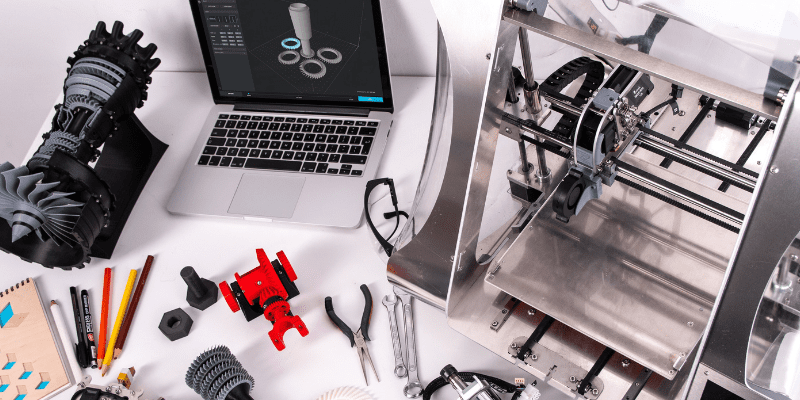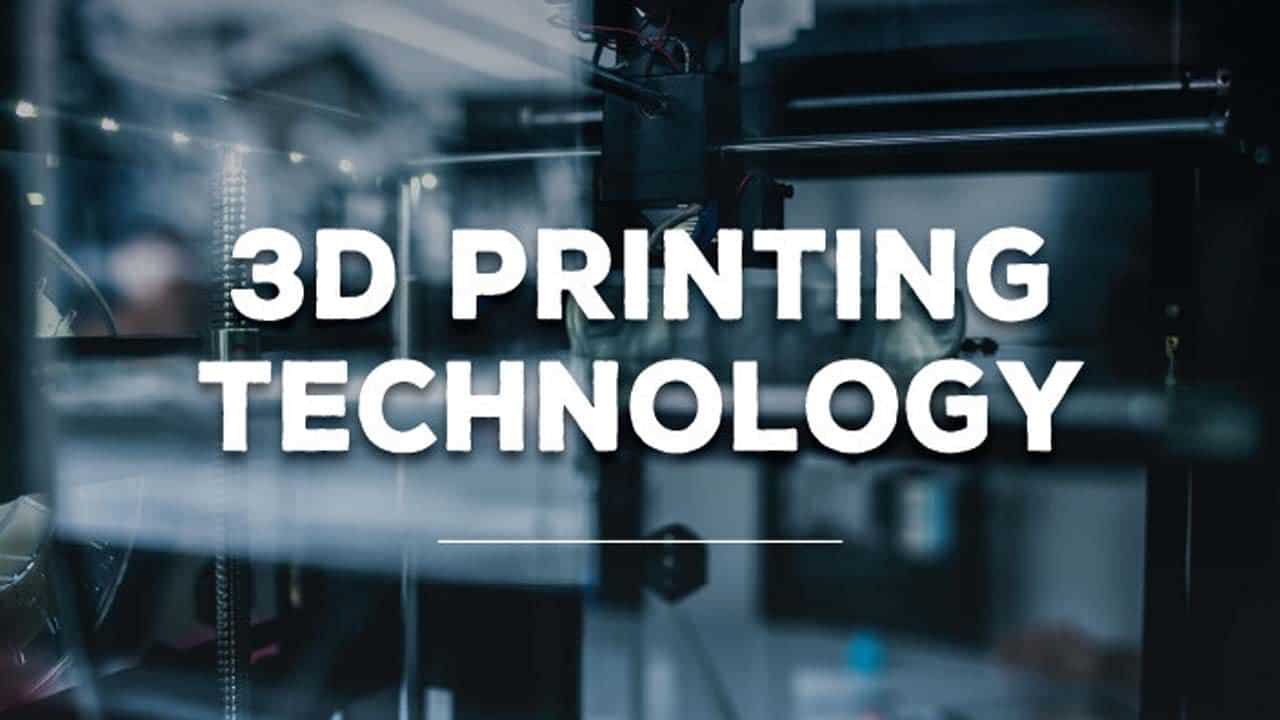Picture this: a technology that can turn your wildest ideas into reality, bringing your dreams to life in stunning detail. That’s the power of 3D printing. In this article, we’ll dive into the exciting world of 3D printing technology, where prototypes evolve into masterpieces right before your eyes.
Now, you might be wondering, “What exactly is 3D printing?” Well, imagine having a magical machine that can take a digital design and transform it into a physical object. That’s precisely what 3D printing does. It’s like having your very own genie, but instead of granting wishes, it materializes your creative visions.
Hold on tight, because we’re about to embark on a mind-blowing journey through the endless possibilities of 3D printing. We’ll explore how this cutting-edge technology is reshaping industries, from aerospace and healthcare to fashion and art. Get ready to be amazed as we uncover the secrets behind this revolutionary process.
So, are you excited to discover how 3D printing can turn concepts into tangible wonders? Join us as we unravel the mysteries of this innovative technology and witness the journey from prototypes to masterpieces. It’s time to unleash your imagination and step into the awe-inspiring world of 3D printing. Let’s begin!

From Prototypes to Masterpieces: Exploring the World of 3D Printing Technology
Technology has revolutionized every aspect of our lives, and 3D printing is no exception. Gone are the days when 3D printing was limited to prototypes and basic models. Today, this innovative technology has evolved to create intricate masterpieces that push the boundaries of design and manufacturing. In this article, we will delve into the fascinating world of 3D printing, exploring its capabilities, applications, and the exciting future it holds.
The Beginnings: A Glimpse into the Origins of 3D Printing
Before we dive into the advancements and achievements of this remarkable technology, let’s take a moment to understand its roots. The concept of 3D printing, also known as additive manufacturing, can be traced back to the 1980s. The pioneer in this field was Charles W. Hull, who invented and patented the first 3D printing technique called stereolithography.
Stereolithography works by using a UV laser to selectively cure a liquid resin, layer by layer, to form a solid object. This groundbreaking invention laid the foundation for the development of various 3D printing techniques and materials that we use today. From simple plastic prototypes to complex metal structures, 3D printing has come a long way in a relatively short span of time.
The Advancements: Pushing the Boundaries of Design
One of the most significant advances in 3D printing technology is the ability to work with a wide range of materials. Initially, plastic was the primary material used in 3D printing. However, today, materials such as metals, ceramics, composites, and even organic matter can be used to create intricate and functional objects.
Moreover, the size limitations of 3D printing have expanded exponentially. While early 3D printers were limited to smaller objects, advancements have led to large-scale 3D printers capable of creating life-sized sculptures, architectural models, and even entire houses. This remarkable capability has opened up new possibilities for industries like aerospace, healthcare, fashion, and more.
Additionally, the level of detail and complexity achievable with 3D printing has improved significantly. High-resolution 3D printers can produce intricate designs with fine details, smooth surfaces, and complex geometries that were once impossible to achieve with traditional manufacturing methods. This has empowered designers and artists to push the boundaries of their creativity, resulting in stunning works of art and functional masterpieces.
The Applications: Transforming Industries and Beyond
With its versatility and transformative capabilities, 3D printing is impacting various industries in profound ways. In the medical field, 3D printing is revolutionizing patient care. Customized implants, prosthetics, and even organs are being created, offering better treatment options and improving the quality of life for patients.
In manufacturing, 3D printing has disrupted traditional supply chains by enabling on-demand production with reduced costs and waste. It has also facilitated rapid prototyping, allowing designers to iterate and refine their products quickly. This has led to faster time-to-market, increased product innovation, and ultimately, greater customer satisfaction.
The fashion industry is also embracing 3D printing, with designers creating avant-garde garments, intricate accessories, and even fully wearable garments. This innovative approach to fashion not only pushes creative boundaries but also offers sustainable alternatives to traditional manufacturing methods.
The Future: Exploring the Boundless Possibilities
As technology continues to advance, the future of 3D printing holds endless possibilities. One area of development is the use of advanced materials. Researchers are exploring the use of biodegradable plastics, conductive polymers, and even living tissues for medical applications. This opens up new avenues for creating environmentally friendly products and enhancing the field of regenerative medicine.
The integration of 3D printing with other technologies such as artificial intelligence, robotics, and virtual reality is also on the horizon. These collaborations will further enhance the capabilities of 3D printing, enabling more sophisticated designs and streamlined production processes.
In conclusion, 3D printing technology has evolved from creating simple prototypes to producing stunning masterpieces with intricate details. With advancements in materials, size capabilities, and design complexity, this technology has transformed industries and opened up new possibilities for innovation. The future of 3D printing is bright, with endless opportunities to revolutionize healthcare, manufacturing, fashion, and beyond. Embrace the world of 3D printing and be prepared to witness the incredible masterpieces yet to come.
Key Takeaways: From Prototypes to Masterpieces: Exploring the World of 3D Printing Technology
- 3D printing technology allows us to turn ideas into physical objects with the help of specialized machines.
- With 3D printing, we can create prototypes quickly and cost-effectively before going into full-scale production.
- This technology opens up endless possibilities for customization, allowing us to make unique, personalized masterpieces.
- From art and fashion to medicine and engineering, 3D printing is revolutionizing various industries.
- Exploring the world of 3D printing technology can inspire creativity and innovation in young minds.
Frequently Asked Questions
Are you curious about the fascinating world of 3D printing technology? Look no further! Here are some common questions and answers about this incredible innovation:
1. How does 3D printing work?
3D printing is a process where a three-dimensional object is created by adding layers of material until the object is complete. It starts with a digital design of the object, which is then sent to a 3D printer. The printer follows the design and deposits material (such as plastic or metal) layer by layer until the object is fully formed. This layer-by-layer approach gives 3D printing its unique ability to produce complex and intricate shapes.
3D printing is a versatile technology used in various industries, including manufacturing, medicine, and even fashion. Its applications range from creating prototypes and customized products to producing spare parts and medical implants.
2. What are the advantages of 3D printing?
One of the key advantages of 3D printing is its ability to create complex geometries that traditional manufacturing methods struggle with. This means that engineers and designers can push the boundaries of what’s possible, creating innovative and unique products. Additionally, 3D printing allows for rapid prototyping, enabling faster product development cycles and reducing time-to-market. This can be especially beneficial in industries that require frequent design iterations.
Another advantage of 3D printing is its potential for customization. With traditional manufacturing, producing customized or one-off items can be costly and time-consuming. In contrast, 3D printing excels at producing personalized products, making it ideal for creating bespoke items or fitting products to specific individuals.
3. What are the limitations of 3D printing?
While 3D printing has come a long way, it still has some limitations. One limitation is the speed at which objects can be printed. Compared to traditional manufacturing methods, 3D printing can be slower, especially when producing larger objects with high levels of detail.
Another limitation is the range of materials available for 3D printing. While the variety of materials is expanding, certain materials, such as certain types of metals or ceramics, may still be challenging to 3D print. Additionally, the mechanical properties of 3D-printed objects may not always match those of conventionally manufactured objects, which can impact their suitability for certain applications.
4. How can 3D printing be used in medicine?
3D printing has revolutionized the healthcare industry, enabling significant advancements in patient care. It can be used to create patient-specific medical devices, such as prosthetics or implants. By utilizing medical imaging data, a 3D-printed device can be precisely tailored to fit an individual patient’s unique anatomy, offering better comfort and functionality.
3D printing also plays a vital role in surgical planning and education. Surgeons can use 3D-printed anatomical models to visualize complex procedures, improving pre-operative planning and enhancing surgical precision. Medical students and residents can also benefit from hands-on experience with 3D-printed anatomical models, enhancing their training and understanding of human anatomy.
5. Can I print anything with a 3D printer?
While 3D printers can create a wide variety of objects, there are some limitations to what can be printed. The size of the object is one constraint, as most consumer-grade 3D printers have size limitations. Additionally, the complexity and structural integrity of the object may impact its printability. Objects with intricate geometries or overhangs may require additional supports during printing.
Moreover, the choice of materials may also limit what can be printed. Different materials have different properties and may require specific printing conditions. Some materials, like food-grade composites or living tissue, present unique challenges and require specialized 3D printing techniques. However, with advancements in technology, the possibilities for 3D printing continue to expand, pushing the boundaries of what we can create.
Summary
3D printing technology is a cool way to create things using a special printer. With this technology, you can make all sorts of stuff, from simple toys to complex medical models. It starts with making a virtual design, which the printer then uses to build the object layer by layer. 3D printing has many exciting applications in different fields, like fashion, architecture, and even space exploration. This technology is still growing, and who knows what amazing creations we’ll see in the future!
So, if you ever wanted to bring your ideas to life or just make something fun, 3D printing is the way to go. It’s like having your own magic machine that can turn your imagination into reality. With more advancements on the horizon, the possibilities are endless!

